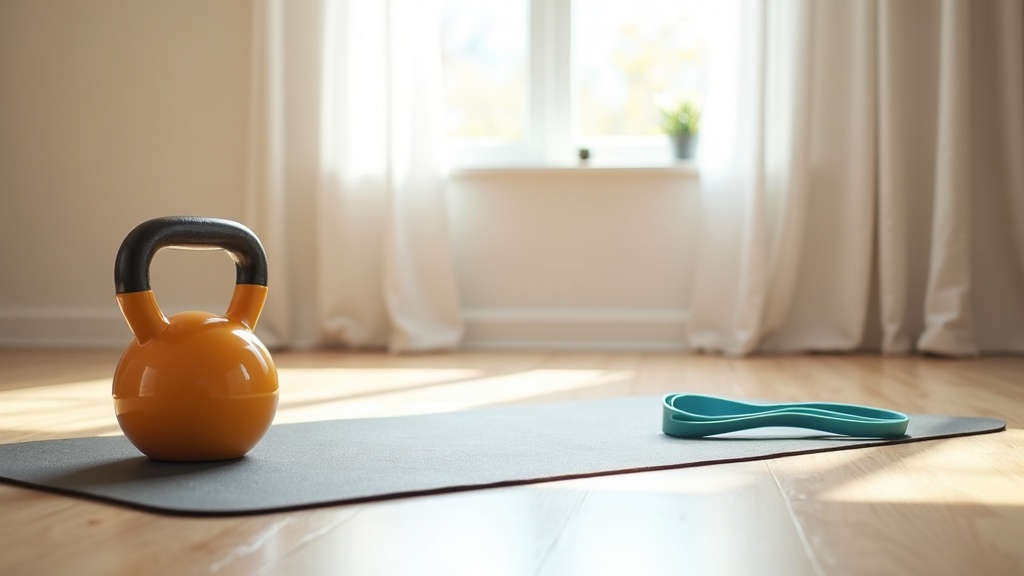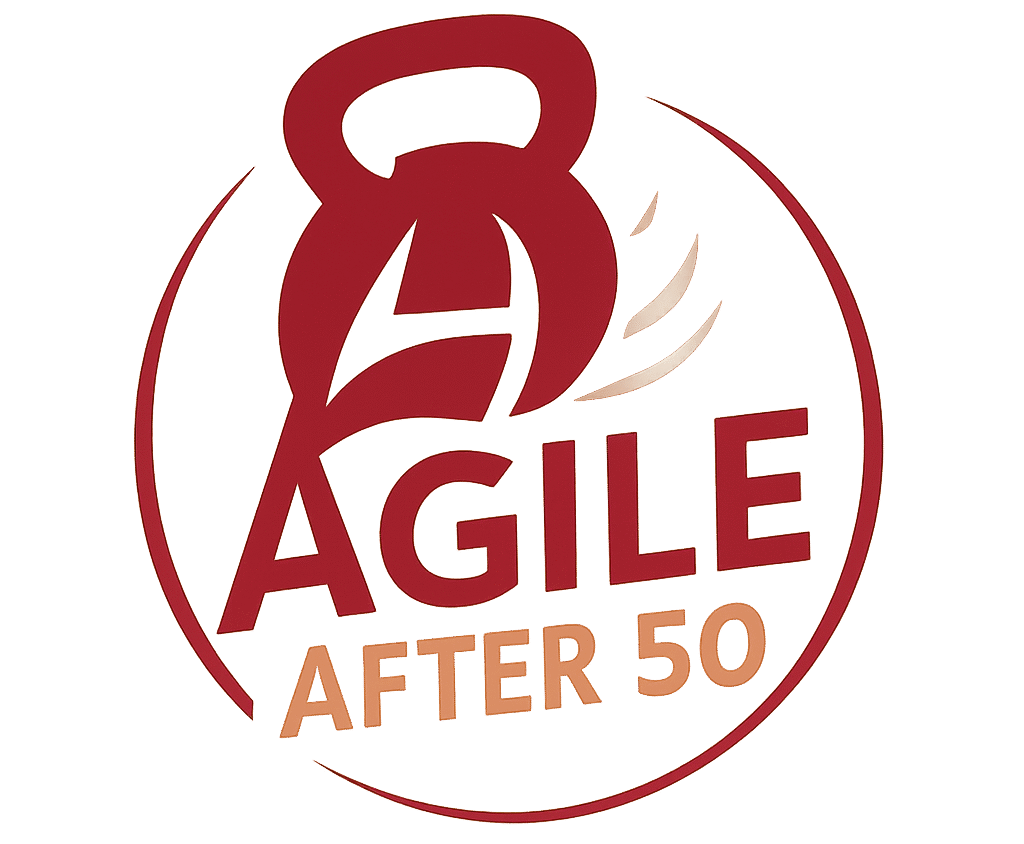If you’re over 50, balance exercises are definitely something you’ll be glad you started early. Balance tends to get a little wobbly with age but the good news is that you can make a big difference with pretty simple moves and just a bit of regular practice.
Why Balance Matters After 50
Staying steady on your feet is about more than just avoiding a tumble. Good balance means you can move confidently, enjoy daily activities, and keep your independence as you age. As we get older, changes in vision, muscle strength, and even hearing can throw off our sense of balance. In fact, some stats estimate that one in every four people over 65 takes a fall each year. Those falls can lead to injuries that are tricky to bounce back from and can seriously affect your well-being and confidence.
When I first noticed my balance wasn’t quite what it used to be, little things—like stepping sideways quickly or turning too fast—made me feel off. That’s when I knew it was time for some balance work, not just reactive stuff, but a habit I could build and see real results from. Taking care of your balance means you’re also investing in your quality of life, giving you the confidence to try new activities and keep up with friends and family.
Simple Strength and Balance Exercises to Try
There are tons of exercises you can do to help with balance, and you don’t need a gym membership to get started. Mixing in a few tools like kettlebells, resistance bands, and your own bodyweight can help, and you can adapt the moves based on what feels manageable for you.
- Single Leg Stands: Stand behind a sturdy chair and lift one foot off the floor. Hold as long as you can (aim for 10 to 30 seconds), then switch sides. If this is tough at first, just go for a few seconds and use the chair for extra support.
- Kettlebell Deadlifts: Grab a light kettlebell, keep your feet hip width apart, and lower the kettlebell between your feet while keeping your back flat. Stand up straight, squeezing your glutes. This builds leg and back strength, which are both really important for balance.
- Band Side Steps: Loop a resistance band around your lower thighs, squat slightly, and step sideways for 8 to 12 reps. Go back the other way. This move works your hip stabilizers and gives a boost to your leg control.
- Heel to Toe Walk: Walk in a straight line, placing your heel directly in front of your toes each step. Keep your arms out for balance. This move is great for fine-tuning stability and is surprisingly challenging.
- Bodyweight Squats: Stand with feet shoulder-width apart, bend your knees, and sit back as if you’re lowering into a chair (don’t let your knees go past your toes). Push up to stand. Squats wake up your whole lower body and your core strength.
Try these moves a few times a week. Even ten minutes regularly can create a noticeable difference if you’re consistent. As you keep at it, you’ll likely find daily movements feel simpler and safer.
Getting Started: What’s Smart to Know First?
Before starting anything new, especially after 50, it’s always a good plan to talk to your physician. If you have ongoing medical conditions or issues like dizziness or numbness, bring those up. I made sure to get a quick checkup before I got into more challenging exercises. It’s also smart to know your limits and always put safety first.
Here’s some beginner-friendly guidance to keep in mind:
- Start Small: Simple exercises, done daily, add up fast. Don’t push to exhaustion; focus on form and stability first.
- Clear Clutter: A tidy space makes balance workouts safer. Move any rugs, pets, or random shoes out of the way before you start your session.
- Go Barefoot (When Practical): Bare feet can help train your foot muscles and give you more feedback from the ground beneath you.
- Use Support: Don’t hesitate to hold onto a chair, wall, or countertop when you’re getting used to these moves. Having extra support is smart as you build confidence.
As you grow more comfortable, you can try standing moves with less support or try holding for longer periods. Just remember, it’s all about steady improvement, not perfection right away.
Other Factors That Affect Balance
It’s not just about exercise; several things can shake up your balance. I learned how hydration, vision, and even medication can play a part. A few helpful things to keep in mind:
- Stay Hydrated: Dehydration can cause dizziness and throw off your balance. Keep water handy, particularly if you’re moving about more or exercising.
- Vision Checks: Your eyes and your balance system are closely connected. Having up-to-date glasses (or contacts) helps you stay grounded and aware of your surroundings.
- Check Medication Side Effects: Some meds can cause lightheadedness or make you dizzy. Ask your doctor if you have any worries about your prescriptions or over-the-counter medicines.
- Wear Proper Footwear: Shoes with good grip and support really make a difference, especially if you’re venturing outside or walking on unfamiliar surfaces. Ditch old or worn shoes as they can increase your risk of wobbling or slipping.
Dealing With Common Balance Challenges
If you’re frustrated by slow progress, you’re not alone. It took me a while to build up to balancing on one leg without holding on to anything. Here are some things that helped me stay on track:
- Keep It Regular: Balance improves with repetition. A few minutes most days is more effective than a long session every now and then.
- Notice Your Triggers: If you feel wobbly after standing up too fast or when it’s dark, focus on those times. You can add more lower body and core moves to your routine to help manage these moments.
Staying patient and celebrating small improvements is key. Any step forward—no matter how small—can boost your confidence for the future.
Making It a Habit: Practical Tips
Building habits around balance takes some reminders and routines that truly work. I started adding single-leg stands while brushing my teeth and heel-to-toe walks on my way to the kitchen. Sneaking in movement throughout your day can turn exercise into an easy habit, not a chore.
- Pair balance work with something you already do, like waiting for the kettle to boil or watching TV commercials.
- Set a reminder on your phone or put a sticky note where you’ll see it, so you don’t forget to get moving.
- Try online or in-person group classes for some extra motivation, plus the bonus of social interaction.
Finding simple strategies to cue your new routines helps you get more consistent. Remember, making balance a natural part of your day leads to bigger rewards over time.
Advanced Balance: Challenge Yourself Safely
Once you’ve mastered the basics, there are some fun ways to take your balance routine up a notch. I like mixing up the surface (like moving from the kitchen floor to a soft yoga mat) or closing my eyes during an exercise to really wake up my inner balance systems. Always make sure there’s something steady nearby in case you need to steady yourself quickly.
- Progress Moves: Try single-leg stands while you swing your free leg to add some difficulty. Add a light kettlebell or band to squats and deadlifts for extra strength training. If you want more of a challenge, try using balance boards or stability balls.
- Combine Movements: Challenge yourself by adding head turns to your heel-to-toe walk. This ramps up the difficulty in a simple way.
- Mind Your Recovery: Give yourself rest days. Feeling a bit sore means your muscles are adapting, but too much discomfort can slow your progress.
It’s also helpful to vary your routine a bit. Adding new moves or different equipment can keep things interesting, which makes you more likely to stick with your balance plan.
Real-Life Tricky Spots: How Better Balance Pays Off
I noticed my improved balance the most when walking on uneven ground or tackling stairs. Good balance makes activities like hiking, gardening, or even getting out of the car much smoother and less stressful. Everyday things like reaching for a high shelf, stepping into the bathtub, or manoeuvring a crowded sidewalk become safer and easier when you feel steady and in control.
- Walking Outdoors: Stability is a huge help with uneven trails or slippery sidewalks. You’ll feel more secure no matter the terrain.
- Home Maintenance: From changing light bulbs to carrying laundry, everything becomes safer and less nerve-wracking once your balance is better.
- Dancing or Recreational Sports: Even low-impact activities, like pickleball or line dancing, get more enjoyable when you’re confident in your balance.
If you like being active, building balance skills can open up new opportunities to join friends for leisurely strolls, community classes, or try out new hobbies.
Frequently Asked Questions
If you’re curious about balance exercises after 50, you’re not alone. Here are some of the most common questions I get asked:
Question: How often should I do balance exercises?
Answer: Most experts recommend at least two to three times per week. In addition, activities like trips up and down stairs, walking outside, or just moving often keep your balance working quietly in the background.
Question: Can I improve balance if I already have trouble standing or walking?
Answer: Absolutely. Start with seated or supported versions of these moves, and gradually progress to standing. Always keep a support nearby for safety.
Question: Are balance exercises safe for people with arthritis or joint pain?
Answer: Most balance moves are gentle, and you can adjust them for your comfort. Focus on low-impact versions and ask a healthcare professional if you have any specific concerns or want personalised advice.
Simple Tools to Support Your Progress
I’m a big fan of using affordable gear you can track down just about anywhere. Here’s what I keep handy at home for my own balance work:
- Kettlebells: A lightweight kettlebell (6 to 16 kg) adds a little challenge without overdoing it. Go lighter at first and always focus on keeping good form.
- Resistance Bands: These bands are portable, versatile, and easy on the joints. They’re great for strengthening hips and legs, which are both key to staying stable.
- Yoga or Exercise Mat: A soft mat gives you some cushion, making getting up and down from the floor easier on your knees and joints.
All these tools are easy to stash by the couch or in a closet, so there’s never a reason not to sneak in a quick session. Plus, they don’t require a lot of space or set up, making your balance routine easy to maintain.
Improving your balance isn’t a one-time project; it’s about making a steady investment in staying active and independent. Focus on steady progress, listen to your body, and take a moment to celebrate the small wins along the way. Consistent habits make a huge difference, especially after 50. Keep practising, keep smiling, and enjoy the stronger sense of confidence you’ll build over time!
